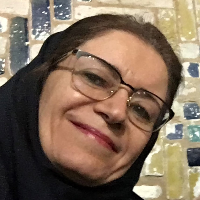Assessment of Daylight Role in Creating Spiritual Mood in Contemporary Mosques
Author(s):
Abstract:
In traditional mosques, mystery of daylight presence has produced a wondrous alteration in the place and increased the spiritual quality of the space. In temporary mosques, usage of daylight is limited to the quantity of illumination and the quality properties of daylight are neglected. To discover the relationship between the architectural properties of praying space with its spiritual quality, this article has studied the cupola space of Ghoba mosque in Tehran credible theories according to two different fields of “physics of light” and “psychology of light”. Combined dome and altar, in which holiness is underlying spiritual atmosphere, is considered therefore the relationship between daylight and spiritual space in mosques is investigated. The lighting design of properties in the cupola space of Ghoba mosque is an appropriate case for assessing the relationship between architectural spaces and forms and opening regarding to the quality of daylight presence. The Style of dome skylight of Ghoba mosque (around the dome skylight) is considered as one of the two main methods of roof skylight for domed yard mosques which can be studied from two perspectives. In the first perspective, the light distribution pattern as the ceiling lighting system during the year is analysed and in the second view, the light distribution pattern associated with underlying space (the shabestan space of mosque and direction to Mecca) to assess the relationship between daylight and spiritual space is examined. Objectives of this research are to present the “daylight control strategies” for designing the prayer spaces, and “analysis method” for the spiritual quality of daylight. To examine the quality and quantity of light in the dome of mosque, specialized tools have been used to measure light such as simple lux meter (metering interior light), data logger lux meter (metering outdoor light) and luminance meter. To draw the illumination contours and daylight distribution pattern in a sample year, radiance software is used for simulation. Simulation results show that the minimum and maximum amount of light in dome space is the range of 150 to 300 lux which is appropriate for studying prayer books and Koran and. In general the brightness distribution is uniform although teh place has greater intensity in the morning than the afternoon. The results show that the openings influence the quality of light. Regarding to the forming roof design (karbandi) and network design, the entire roof is extensively a major factor in creating a uniform light distribution pattern in the building. There is a direct relationship between opening design factors and qualitative and quantitative aspects of light in space. Employing three factors of ceiling long height, the skylight and material surfaces to achieve uniform illumination in the dome design mosque is considered, but specific features of windows including the location, scale, form and proportion of the pillar glass influence on the quantitative and qualitative aspects of light. The canopies over windows impact on quality of light: To achieve soft light there are stylized wide area network openings in the roof which make it necessary to comparise between the glass and pillar. Openings of canopy prevent the direct rays of sunlight in vertical angles and break the light beams to achieve a stylized light. Due to the potential exposure bias, above skylight style, the ceiling for the spaces of worship practices is recommended. With in-depth look at the light of Ghoba mosque, we find the lack of attention to qualitative dimensions of light in contemporary architects. Most light designers, stage designers, photographers and cameramen take advantage from the ability to light for creating scenes and different feelings. Architects creatively aim to use qualitative and quantitative characteristics of natural light for artistic design of the form (opening form and all their relevant factors and also the interior form). On the other hand; today, architects for utilization of effective qualitative lighting use the artificial lighting regardless of the Iranian art and rich architectural history in using natural light. This study differs from previous studies; used measurement tools, spiritual space analysis of light, considering the relationship of quantity (field data gathering) and quality of light (fantasy and poetics of light) are the originality of this research.
Keywords:
Language:
Persian
Published:
Journal of Architect, Urban Design & Urban Planning, Volume:7 Issue: 12, 2014
Page:
11
magiran.com/p1406029
دانلود و مطالعه متن این مقاله با یکی از روشهای زیر امکان پذیر است:
اشتراک شخصی
با عضویت و پرداخت آنلاین حق اشتراک یکساله به مبلغ 1,390,000ريال میتوانید 70 عنوان مطلب دانلود کنید!
اشتراک سازمانی
به کتابخانه دانشگاه یا محل کار خود پیشنهاد کنید تا اشتراک سازمانی این پایگاه را برای دسترسی نامحدود همه کاربران به متن مطالب تهیه نمایند!
توجه!
- حق عضویت دریافتی صرف حمایت از نشریات عضو و نگهداری، تکمیل و توسعه مگیران میشود.
- پرداخت حق اشتراک و دانلود مقالات اجازه بازنشر آن در سایر رسانههای چاپی و دیجیتال را به کاربر نمیدهد.
In order to view content subscription is required
Personal subscription
Subscribe magiran.com for 70 € euros via PayPal and download 70 articles during a year.
Organization subscription
Please contact us to subscribe your university or library for unlimited access!




